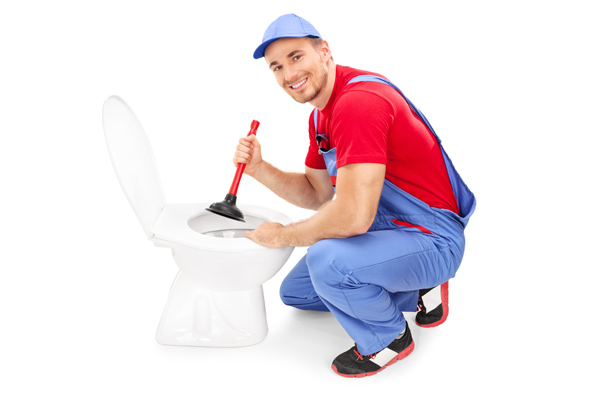Nearly everybody has their own unique idea involving Tips on How to Effectively Use a Plunger.

Intro
Correct maintenance of household drains is vital for stopping obstructions and making certain smooth water circulation. Among the secret tools in every property owner's toolkit is the plunger, along with different drain cleansers developed to tackle persistent clogs properly. This post explores just how to use bettors and drain cleaners properly to keep your drains pipes streaming openly.
Section 1: Recognizing Plungers
Kinds of Plungers
There are numerous sorts of plungers offered, each made for various types of drains and obstructs. The most typical kinds consist of cup plungers, flange plungers, and accordion bettors.
Just How Plungers Work
Plungers deal with the concept of developing stress and suction to dislodge clogs. When correctly applied over a drainpipe, they produce a vacuum cleaner that can take out particles or separate clogs.
Selecting the Right Bettor
Picking the right plunger depends on the type of drain and the nature of the clog. Mug plungers are perfect for sinks and tubs, while flange bettors are much better fit for bathrooms due to their layout.
Common Mistakes with Plungers
Avoiding these mistakes ensures effective plunging: improper seal around the drain, inadequate force, and not clearing bordering particles.
Section 2: Using Plungers Effectively
Prep work
Prior to plunging, ensure the bettor covers the drainpipe completely and forms a limited seal. Clear any type of noticeable particles around the drain opening.
Technique
Beginning with gentle diving movements to build suction. Rise pressure slowly, making use of a steady rhythm. Repeat as required up until the drainpipe gets rid of.
Troubleshooting Tips
If plunging doesn't work, try changing the seal, applying oil jelly for a far better seal, or making use of a various kind of plunger.
Section 3: Understanding Drainpipe Cleaning Company
Kinds Of Drain Cleaning Company
Drain cleansers can be chemical or enzymatic. Chemical cleaners use solid chemicals to dissolve clogs, while enzymatic cleansers utilize all-natural enzymes to break down raw material.
How Drainpipe Cleaners Job
Chemical cleaners respond with clogs to liquify them, while chemical cleaners break down natural materials like hair and grease without damaging pipes.
Security Considerations
Always use handwear covers and eye protection when utilizing chemical drainpipe cleaners. Make sure ample ventilation and comply with maker guidelines thoroughly.
Eco-Friendly Alternatives
Take into consideration making use of vinegar and baking soda or enzyme-based cleaners for environment-friendly alternatives that are more secure for pipelines and the setting.
Area 4: Making Use Of Drainpipe Cleaning Company Properly
Application Strategies
Put chemical cleaners directly into the drainpipe opening. Permit them to help the suggested time before flushing with warm water. Chemical cleaners should rest overnight.
Precautions
Avoid blending different sorts of cleansers, as this can produce poisonous fumes. Never ever use chemical cleansers along with a bettor, as splashing can occur.
Handling Stubborn Clogs
For persistent clogs, take into consideration making use of a plumbing serpent or calling an expert plumbing to stop damage to pipelines.
Final thought
In conclusion, comprehending how to utilize bettors and drain cleansers efficiently is crucial for maintaining healthy and balanced pipes systems. By choosing the right devices and methods, homeowners can take on minor obstructions and stop major pipes issues down the line.
How To Properly Use A Plumbing Snake To Clear Drains
When any drain clogs in our home arise, we tend to gravitate toward the plunger and little else. In cases where the plunger and its vacuum-created pressure are not able to clear clogs, many immediately move to harmful chemicals or simply call their plumber to fix the issue.
we’re happy to help with all drain cleaning needs and concerns. This includes informing you on a few other home remedies you may have at your disposal for minor to moderate clogs, one of which is the use of a plumbing snake. Many people have never used one of these before – let’s go over the steps to take when your drain clogs and you have a plumbing snake available.
Attempt Plunger Use
The first step here, as we noted above, should indeed be to grab your plunger when you notice a drain clog and attempt to resolve it this way. If you’re unsure how to use a particular type of plunger, our plumbers can answer any questions you have. If this doesn’t do the trick, however, you move on to the snake.
Locate And Prepare Snake
A plumbing snake is a metal or plastic device that’s generally about a quarter of an inch thick. It’s design with significant extensions, meant to reach down into your clogged drain and push the clog out. Snakes also contain drain augers that will latch onto and push stubborn blockages.
If your plunger doesn’t clear a clog, locate your snake and bring it to the drain in question. We also recommend keeping a bucket nearby to collect the clog once you pull it out, plus we’d advise wearing goggles and possibly protective gloves.
Feed Snake
Once you’re ready to go, feed the snake slowly down the drain, using the crank device it comes with to keep it moving until it finds the clog. Once this happens, much of the clog will be latched onto the coil so you can pull it out, while the rest will simply break up and flow downward.
Detach Debris
Remove the snake slowly from the drain, and once you’ve done so, pick off any debris that’s stuck to the coil. This is another area where wearing gloves is a must.
Flush Drain
Finally, take a few minutes to ensure the snake has done its job correctly. If you’ve been using it on a toilet, flush the toilet a couple times and make sure everything flows well. If you’ve used it on a different drain, flush it with some room temperature water.
https://www.mybuddytheplumber.com/blog/how-to-properly-use-a-plumbing-snake-to-clear-drains/

Application Strategies
Put chemical cleaners directly into the drainpipe opening. Permit them to help the suggested time before flushing with warm water. Chemical cleaners should rest overnight.
Precautions
Avoid blending different sorts of cleansers, as this can produce poisonous fumes. Never ever use chemical cleansers along with a bettor, as splashing can occur.
Handling Stubborn Clogs
For persistent clogs, take into consideration making use of a plumbing serpent or calling an expert plumbing to stop damage to pipelines.
Final thought
In conclusion, comprehending how to utilize bettors and drain cleansers efficiently is crucial for maintaining healthy and balanced pipes systems. By choosing the right devices and methods, homeowners can take on minor obstructions and stop major pipes issues down the line.
How To Properly Use A Plumbing Snake To Clear Drains
When any drain clogs in our home arise, we tend to gravitate toward the plunger and little else. In cases where the plunger and its vacuum-created pressure are not able to clear clogs, many immediately move to harmful chemicals or simply call their plumber to fix the issue.
we’re happy to help with all drain cleaning needs and concerns. This includes informing you on a few other home remedies you may have at your disposal for minor to moderate clogs, one of which is the use of a plumbing snake. Many people have never used one of these before – let’s go over the steps to take when your drain clogs and you have a plumbing snake available.
Attempt Plunger Use
The first step here, as we noted above, should indeed be to grab your plunger when you notice a drain clog and attempt to resolve it this way. If you’re unsure how to use a particular type of plunger, our plumbers can answer any questions you have. If this doesn’t do the trick, however, you move on to the snake.
Locate And Prepare Snake
A plumbing snake is a metal or plastic device that’s generally about a quarter of an inch thick. It’s design with significant extensions, meant to reach down into your clogged drain and push the clog out. Snakes also contain drain augers that will latch onto and push stubborn blockages.
If your plunger doesn’t clear a clog, locate your snake and bring it to the drain in question. We also recommend keeping a bucket nearby to collect the clog once you pull it out, plus we’d advise wearing goggles and possibly protective gloves.
Feed Snake
Once you’re ready to go, feed the snake slowly down the drain, using the crank device it comes with to keep it moving until it finds the clog. Once this happens, much of the clog will be latched onto the coil so you can pull it out, while the rest will simply break up and flow downward.
Detach Debris
Remove the snake slowly from the drain, and once you’ve done so, pick off any debris that’s stuck to the coil. This is another area where wearing gloves is a must.
Flush Drain
Finally, take a few minutes to ensure the snake has done its job correctly. If you’ve been using it on a toilet, flush the toilet a couple times and make sure everything flows well. If you’ve used it on a different drain, flush it with some room temperature water.
https://www.mybuddytheplumber.com/blog/how-to-properly-use-a-plumbing-snake-to-clear-drains/

Do you enjoy reading up on A Guide to Plungers (and How to Use Them)? Place a review further down. We would be happy to hear your insights about this blog post. Hoping that you visit us again in the future. Are you aware of someone else who is fascinated about the niche? Why not share it. Thank-you for taking the time to read it.
Call Today